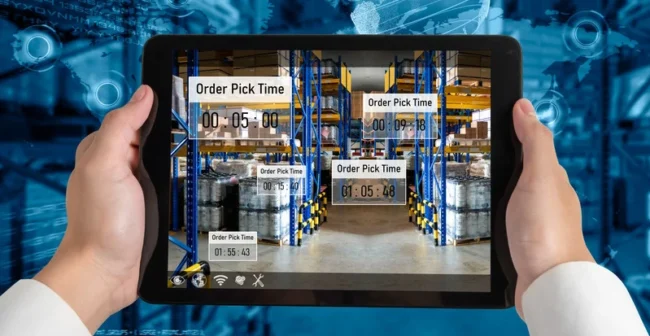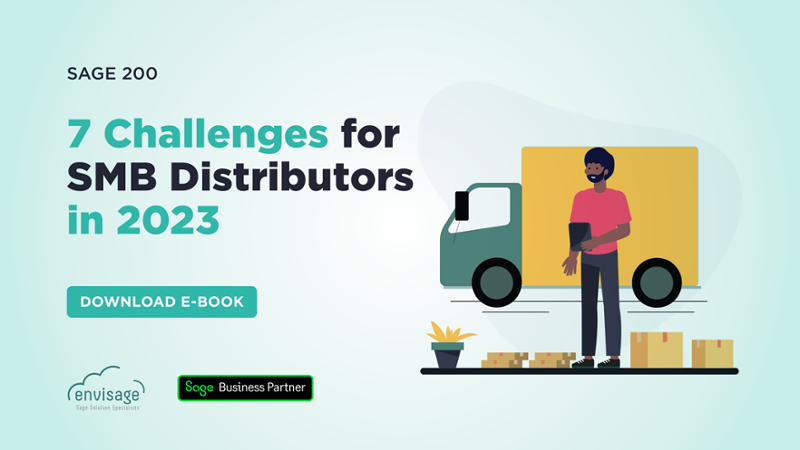
- Sage 200, Sage Intacct, Wholesale Distribution
Running a wholesale distribution business comes with a lot of challenges. Managing inventory, fulfilling orders on time, and keeping track of costs can quickly become overwhelming. The right ERP system can make a huge difference, helping you operate efficiently, reduce errors, and make smarter decisions. For distributors looking for flexibility, visibility, and control, a Sage warehouse management system is a strong solution. It provides the tools to handle inventory, financials, and warehouse operations with accuracy and reliability, regardless of the size of your business.
Whether you are just starting out or managing a medium-sized operation with a complex supply chain, the choice between Sage 200 and Sage Intacct comes down to your specific business needs. Both platforms are robust, scalable, and designed to support distributors as they grow.
Understanding the needs of wholesale distribution
Before diving into ERP features, it’s important to understand your business challenges. Do you frequently run out of stock, or do you often carry excess inventory? Are manual processes slowing down your order fulfilment, or are you struggling to get real-time data for better financial and operational decisions?
A Sage warehouse management system can address these issues, but not every system does it the same way. Key capabilities to look for include:
• Inventory control and real-time stock visibility: know exactly what’s in your warehouse at any time,
• Financial management and reporting: access accurate, up-to-date financial information to make informed decisions,
• Order processing automation: reduce manual errors and speed up order fulfilment,
• Demand forecasting and historical data analysis: plan better by understanding trends and past performance,
• Barcode scanning and handheld device integration: increase accuracy and efficiency in picking, packing, and stocktaking.
A Sage warehouse management system, whether implemented through Sage 200 or Sage Intacct, supports all these capabilities, giving your business more control and confidence in its operations.
Why choose Sage 200 for warehouse management?
The Sage 200 warehouse management system is designed specifically for small to midsized distribution companies. It gives you end-to-end control of warehouse and inventory processes while allowing you to tailor solutions to your operational needs.
Some key features of Sage 200 include:
Integrated barcoding module
Handheld scanners make picking, packing, and stocktaking faster and more accurate, reducing errors and saving time.
Accurate stock forecasting
Analyse historical trends and current stock levels to predict future demand more effectively.
Improved traceability
Track products from arrival to dispatch, giving full visibility across your warehouse operations.
Customisable for growth
As your business grows, Sage 200 can scale with you, adapting to more complex operations and processes.
When implemented with an experienced Sage 200 partner, like Envisage, the system is tailored to your business processes and integrated seamlessly. This ensures you get the most value from your investment and your team can start using it effectively without major disruption.
Why consider Sage Intacct?
For businesses that prioritise cloud-first solutions, Sage Intacct provides advanced financial management with strong distribution capabilities. Recognised as one of the Ireland’s top cloud accounting platforms, it offers finance teams automation, accuracy, and complete visibility.
Sage Distribution and Manufacturing Operations (SDMO)
SDMO enhances Sage Intacct with advanced distribution capabilities, ideal for businesses with complex warehouse and fulfilment needs.
• Real-time financial visibility – cloud-based dashboards and reporting give instant insight into margins, performance, and cash flow
• Scalable and integrative – easily connect Sage Intacct with other tools to create a customised system suited to your processes
• Ease of use – the intuitive interface reduces training time and helps teams adopt the system quickly
As a Sage Intacct partner, Envisage provides guided implementations, ongoing support, and personalised setups, helping businesses get the most out of the platform. For distributors looking to grow efficiently, exploring a demo for Sage Intacct with SDMO can be a valuable step in understanding how it could transform operations.
Key features of a Sage ERP solution
Both Sage 200 and Sage Intacct provide tools to manage inventory, finances, and warehouse operations effectively. Some of the most important features include:
Optimised financial management
Both platforms offer robust financial tools with visibility into costs, margins, and cash flow. This enables better decisions about purchasing, pricing, and growth strategies.
Real-time inventory management
Say goodbye to spreadsheets and guesswork. Real-time tracking helps prevent stockouts and overstocking, improves order fulfilment, and reduces warehouse costs.
Better demand forecasting
Analyse past sales and seasonal trends to plan inventory accurately and meet customer demand without unnecessary excess.
Efficient order processing
Automated workflows speed up order entry, reduce errors, and improve dispatch times, resulting in higher customer satisfaction.
Advanced warehouse features
Barcode scanning, automated picking lists, and inventory visibility give precision and efficiency to warehouse operations. Sage 200 and Sage Intacct with SDMO both provide these capabilities.
Choosing the right platform
The decision between Sage 200 and Sage Intacct largely depends on your business size, complexity, and operational focus.
Sage 200 – Ideal for distributors needing a hybrid or onsite system with strong stock control and supply chain integration.
Sage Intacct – best suited for finance-driven, cloud-first businesses seeking real-time financial control and scalable distribution capabilities.
Working with an experienced Sage Intacct and Sage 200 partner can make this decision much easier. They can evaluate your current processes, suggest the best platform, and ensure a smooth and successful implementation tailored to your business needs.
Getting Started
If inventory headaches or a lack of financial visibility are holding your business back, it’s time to explore how a Sage warehouse management system can help. Both Sage 200 and Sage Intacct offer robust tools to improve efficiency, accuracy, and insight, helping your business grow and adapt in a competitive wholesale distribution market.
Get in touch to learn more about these solutions and find out why Envisage is the right Sage partner to support your business through implementation and beyond.
About the Author

Robert Burke
Robert is a Senior Consultant at Envisage with more than two decades of experience in software consulting. Since 2014, he has specialised in implementing Sage 200 and Sage Intacct, supporting businesses in optimising operations and financial management. Before joining Envisage, Robert worked in consulting and development roles, gaining extensive expertise across Sage 50, Sage 100, and payroll solutions.












